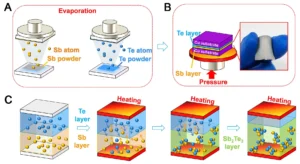Comprehensive Guide to Manganese Dioxide (MnO₂) as a Research Material
Introduction to Manganese Dioxide (MnO₂)
Manganese Dioxide (MnO₂) is a widely studied inorganic compound known for its unique chemical, physical, and electronic properties. It plays a crucial role in various industrial applications, including catalysis, energy storage, water treatment, and electronics. MnO₂ exists in multiple polymorphic forms, each with distinct characteristics, making it a versatile material for scientific research and commercial applications.
Basic Properties of MnO₂
1. Chemical Properties:
- Chemical Formula: MnO₂
- Molecular Weight: 86.94 g/mol
- Oxidation State of Mn: +4
- Solubility: Insoluble in water, soluble in acids
- Reactivity: Acts as an oxidizing agent, decomposes upon heating
2. Physical Properties:
- Appearance: Black or dark brown powder
- Density: ~5.03 g/cm³
- Melting Point: Decomposes at around 535°C
- Crystal Structure: Polymorphic (common forms include α, β, γ, and δ)
- Electrical Conductivity: Semi-conductive in nature
Polymorphic Forms of MnO₂
MnO₂ exists in different crystallographic structures, which impact its properties and applications:
- α-MnO₂: High porosity and large surface area; used in catalysis and energy storage.
- β-MnO₂: Thermodynamically stable; commonly found in natural ores and used in battery applications.
- γ-MnO₂: Disordered tunnel structure; often utilized in supercapacitors.
- δ-MnO₂: Layered structure with high intercalation ability; used in lithium-ion batteries and pseudocapacitors.

Synthesis Methods of MnO₂
Several synthesis methods are employed to obtain MnO₂ in different forms, tailored for specific applications:
- Solid-State Synthesis:
- Thermal decomposition of manganese compounds (Mn(NO₃)₂, MnCO₃) at high temperatures.
- Produces crystalline MnO₂ but with limited control over morphology.
- Hydrothermal Synthesis:
- Aqueous solution reactions under high temperature and pressure.
- Yields high-purity MnO₂ with controlled phase and morphology.
- Sol-Gel Method:
- Uses manganese precursors and a gelation process to produce MnO₂ nanoparticles.
- Allows precise control of particle size and surface properties.
- Electrochemical Deposition:
- Electrochemical oxidation of Mn²⁺ ions in aqueous solutions.
- Used for thin-film deposition in battery electrodes and catalysts.

Applications of MnO₂
1. Energy Storage
- Used as a cathode material in alkaline and lithium-ion batteries.
- Key component in supercapacitors due to its high capacitance and redox activity.
2. Catalysis
- Acts as an efficient catalyst in oxidation reactions.
- Used in water splitting, pollutant degradation, and fuel cell applications.
3. Water Treatment
- Removes heavy metals and organic pollutants.
- Used in oxidation and filtration processes.
4. Electronic and Sensor Applications
- Employed in gas sensors and biosensors.
- Has applications in electronic components due to its semiconducting properties.
5. Biomedical Applications
- Potential use in drug delivery systems.
- Investigated for its antibacterial and anticancer properties.
Challenges and Future Perspectives
Despite its advantages, MnO₂ faces challenges such as poor electrical conductivity and structural instability in some applications. Research is ongoing to improve its properties through doping, composite formation, and nanoscale engineering. Future studies focus on enhancing MnO₂-based materials for more efficient energy storage, environmental remediation, and biomedical applications.
Conclusion
Manganese Dioxide (MnO₂) is a vital material in scientific research and industrial applications due to its diverse properties and multiple polymorphic structures. Its role in energy storage, catalysis, water treatment, and emerging biomedical applications makes it a subject of ongoing research and innovation. With continued advancements, MnO₂ will remain a cornerstone material in various high-tech and sustainable solutions.




